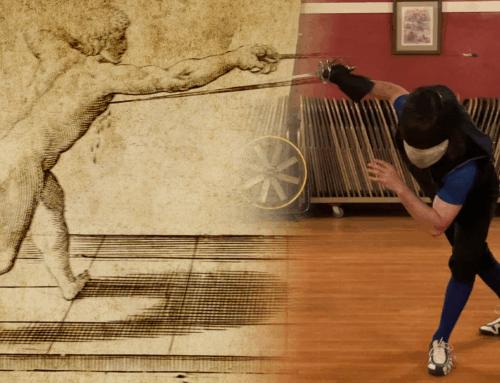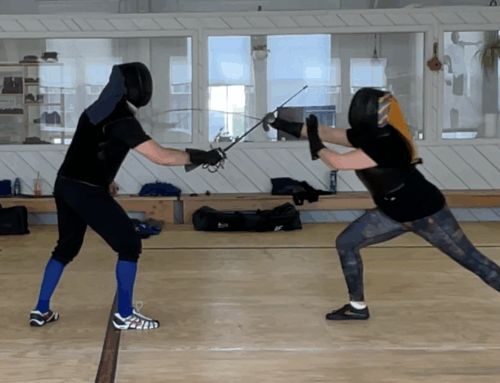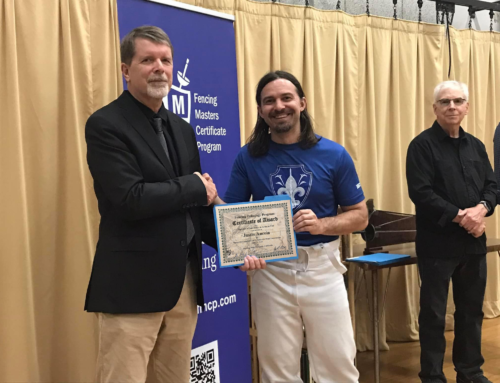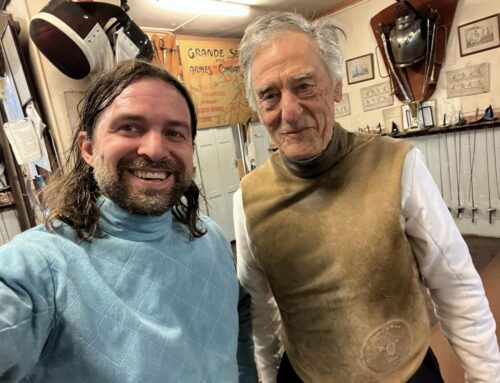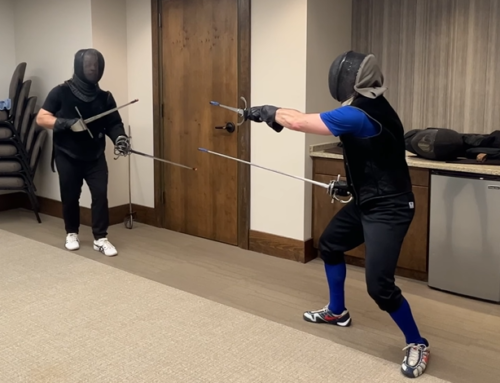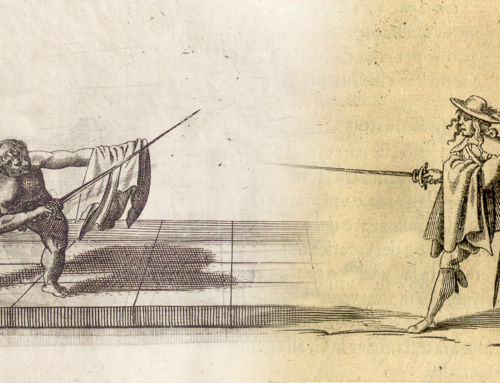Today we’ll be looking at the plays in Plate 18 of La Scherma by Francesco Ferdiando Alfieri. You can snag the Terminiello copy over on Amazon and the Tom Leoni version over on LuLu. I’m cross-referencing both in this chapter.
This chapter goes over how to defend, attack and wound an opponent who attacks with too much rashness, specifically by an opponent who’s trying to kill you with the passing step.
I think it would be fun to go over this plate while working on the plays from Plate VIII and IX.
The Intro
Alfieri starts off by talking about how no activity requires “more prudence” than fighting a duel because 1) our lives depend on it and 2) the smallest motion can give us an advantage or disadvantage. And the fighter who moves with too much rashness or excessive audacity pays for it with their life.
The Plays
To mix it up, the fencer on the left is the victor this time.
Play #1. Fencer 34 stand on guard in guardia mista, creating an opening on their outside line. Gentleman 35 stands in quarta and doesn’t spot the ruse. Gentleman 35 attacks with a passing step. Gentleman 34, performs a cavazione and strikes.
Few notes on this. When we think of a cavazione we typically think of a movement from one line to another by going under the sword, but that’s not always the case. You can cavazione above an opponent’s sword (which I believe is being done in this plate). Cavazione just a changing of lines. With Alfieri, we see him doing cavaziones from high to low, as well. In this play, the cavazione is more easily done going above the opponent’s sword, similar to a modern coupe.
Secondly, the illustration shows the shot in prima but it can also be easily landed in seconda or terza, as well.
Thirdly, notice Gentleman 34 closing off the outside line with his off-hand. We don’t see this much in La Scherma but it’s important to still parry/close that line off, lest you find yourself also being struck.
Play #2. The second play is pretty much the same as the first. Gentleman 34 parries with his off-hand and then strikes with a mandritto or riverso cut to the head alone Line A.
Play #3. The last play has Gentleman 34 performing a cavazione and striking in seconda under Gentleman 35’s sword arm while lowering his body (see previous chapter).
It’s a little unclear what type of cavazione Alfieri is talking about here. Are we moving from outside to inside or high to low. Since there’s no new info, I’m assuming that we’re starting off similar to Play #1, with Gentleman 34 in guardia mista and providing an outside line opening. From here, I believe Gentleman 34 performs a high to low cavazione, turning their hand into seconda to close off the line and lowering their body to strike their opponent under the sword arm.





